Itinerary Overview
🏍️ Day 1 – Ho Chi Minh City + Cu Chi Tunnels
🚌 Day 2 – Mekong Delta
🚌 Day 3 – Ho Chi Minh City
🚆 Day 4 – Mui Ne
🚆 Day 5 – Ho Chi Minh City [Shopping]
✈️ Day 6 – Da Nang + Hoi An
🏍️ Day 7 – Hoi An + Da Nang + Hue
🏍️ Day 8 – Khe San
🏍️ Day 9 – Phong Nha Khe Bang
🏍️ Day 10 – Phong Nha Khe Bang
🏍️ Day 11 – Pho Chau
🏍️ Day 12 – Ninh Binh
🏍️ Day 13 – Ninh Binh + Hanoi
✈️ Day 14 – Ho Chi Minh City
Introduction
This itinerary is great for DIY travellers and adventure riders who want to get their feet really wet but is short on time. It is fast-paced and requires you to constantly be on the go. Under each section, you’ll likely find a box that contains helpful resources and tips.
Overall, 2 weeks was simply too short for us to see the country and ride from South to North. I would say you need at least 3-4 weeks to properly scratch the surface.
I highly recommend you to check out my Vietnam Cheat Sheet before reading this itinerary. There, you will find practical information that will help you calibrate expectations and sort out logistics when touring Vietnam. God bless!
DAY 1 – ARRIVE IN HO CHI MINH CITY
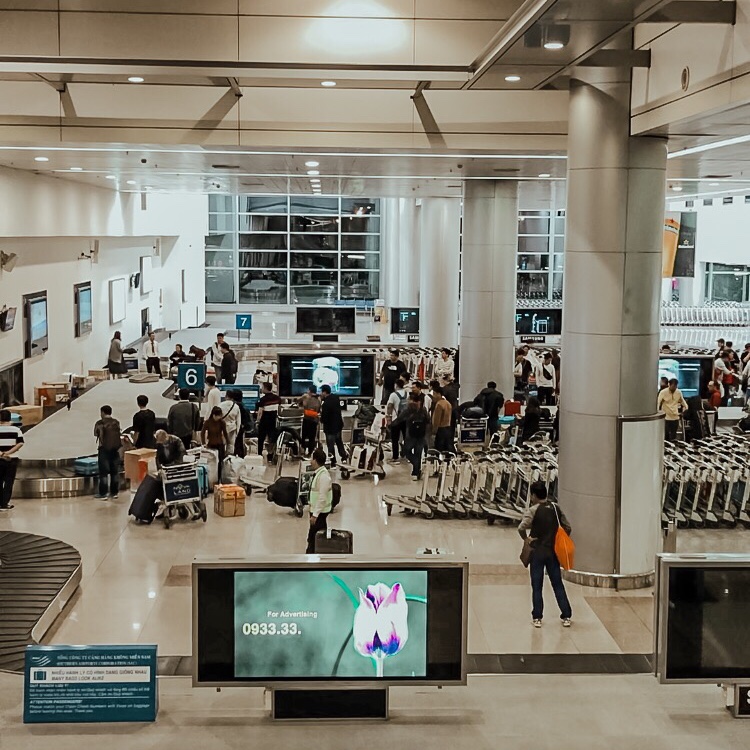
FROM THE AIRPORT
We arrived in Ho Chi Minh City (HCMC) around 10 pm on a weekday and as soon as we exited the airport, we were greeted by the wonderful weight of humidity. Having been born and raised in Taiwan, it was absolutely heartwarming– metaphorically for me and literally for my husband, Mike.
Although we had the luxury of being picked up by a local family friend, taking the airport taxi into the city is super easy. If you have read my Vietnam Cheat Sheet, you will know to download the Grab app, essentially Uber, to save you the trouble of relaying directions in broken Vietnamese and potentially getting scammed. If you don’t have the app, taxis are easy to find at the airport entrance. Don’t forget to pick up a SIM card on the way out! We used Viettel.
See this Tripadvisor’s article on getting to and from SGN airport and Thuymi [AdventureFaktory] for buying a SIM card in Vietnam.
WHERE TO STAY
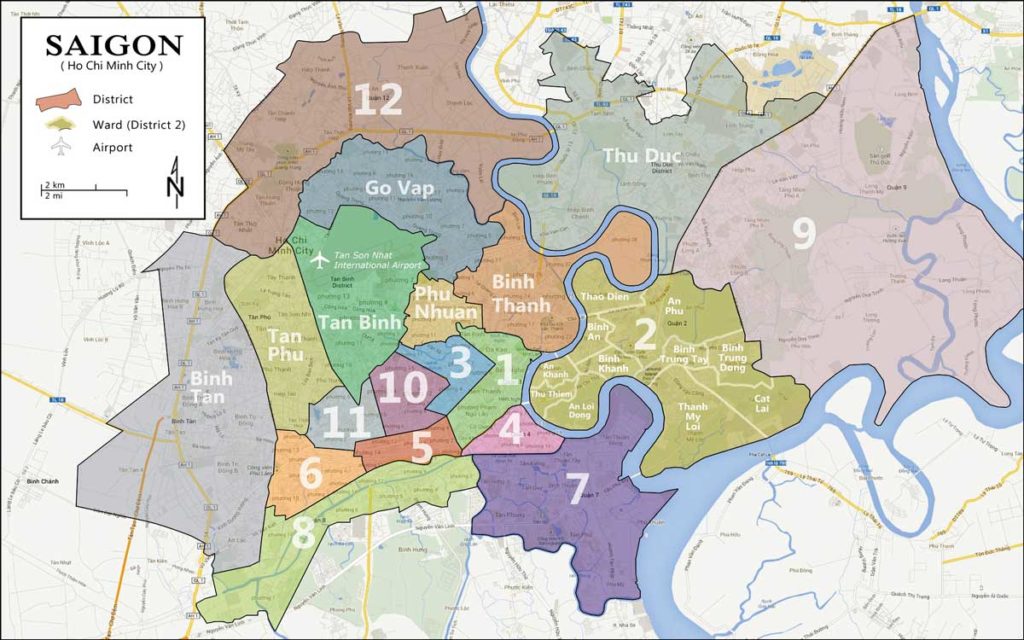
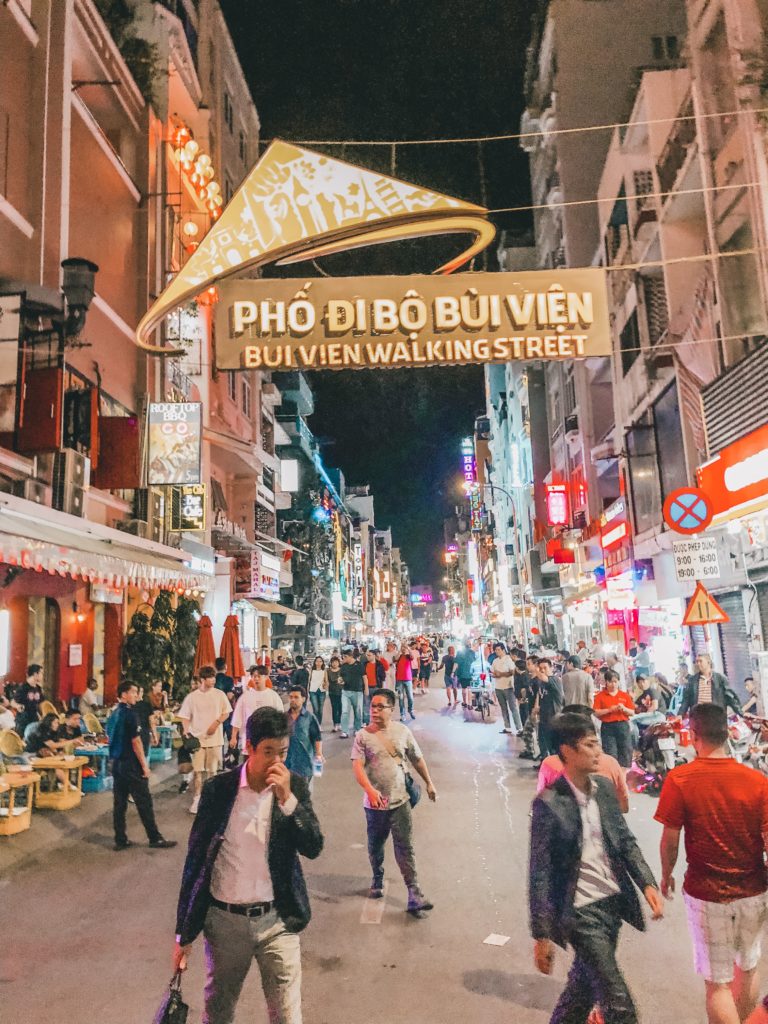
We chose to stay at Luan Vu Hotel in the Backpacker District for the first 2 nights based on online recommendations. Our thoughts: You will love it or hate it. The street is lined with clubs that blast music until 3 am. The music is so loud, it can practically fill a stadium. A lot of reviews for nearby hostels complain about the noise. Still, it is a neat spectacle and not a far example of how extra Asians can be (in a good way). We don’t think it’s a must-see, but it could be a place to start your adventure with a bang! That said, we had enough after 2 nights.
HCMC is broken up into 24 districts. Most blogs recommend accommodations in District 1, especially Backpacker District. My suggestion: get acquainted with all the districts and choose one based on the attractions you want to see. I wouldn’t suggest staying too far away from attractions unless you have a private driver. Even then, it takes a while to get to places due to traffic being so bad. There’s also no subway in the city.
Vietcetera offers a really comprehensive overview of districts and neighbourhoods. Use Thuymi [AdventureFaktory] to supplement.
WHAT TO EAT [BACKPACKER DISTRICT]
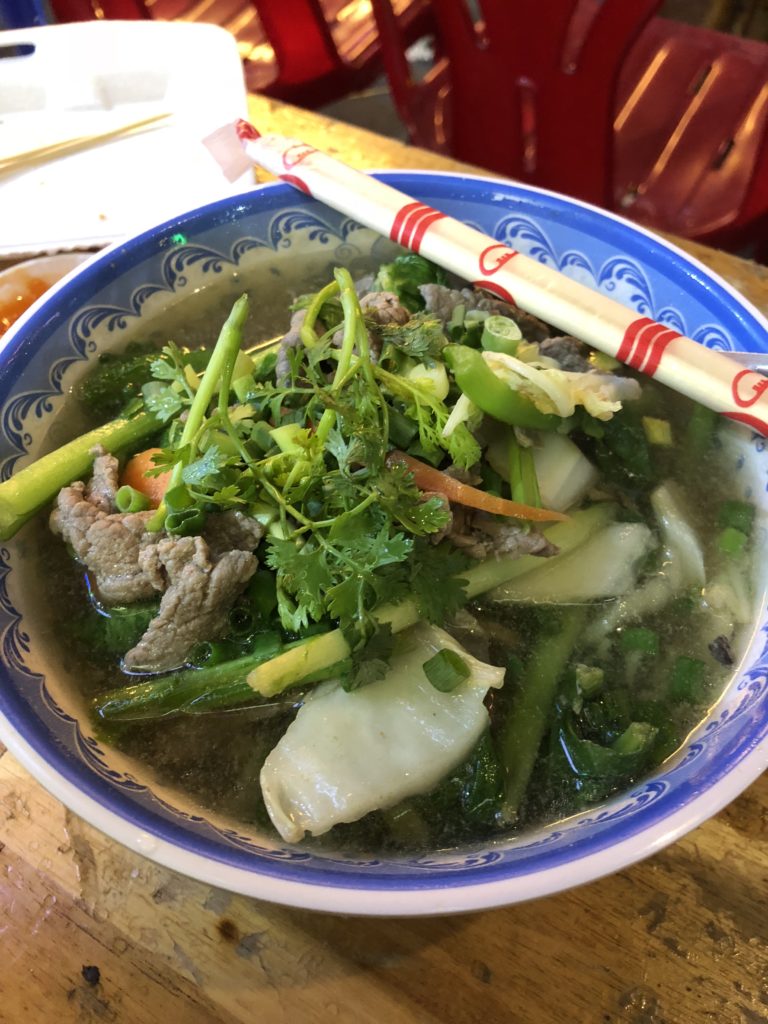
One perk of living in the Backpacker District was having a bowl of soup noodle and banh mi readily available at 1 am. This was a godsend after a long flight even though food was mediocre and overpriced. When you arrive, you will see tons of outdoor restaurants lining the street; simply pick one, sit down, and the owners will hand you a menu.
Food in Southern Vietnam are known to be quite sweet. Due to its robust tropical plantations, southerners like to infuse fruits and sugars into their meals. As you travel up north, food gets less sweet and more spicy. Convenient stores are also great for hot food. Most are open 24/7 and serve food so cheap, it makes you question everything back home.
DAY 2 – CU CHI TUNNELS DAY TRIP
Cu Chi Tunnels is a mind-blowing network of connected underground tunnels used during the Vietnam (American) War.
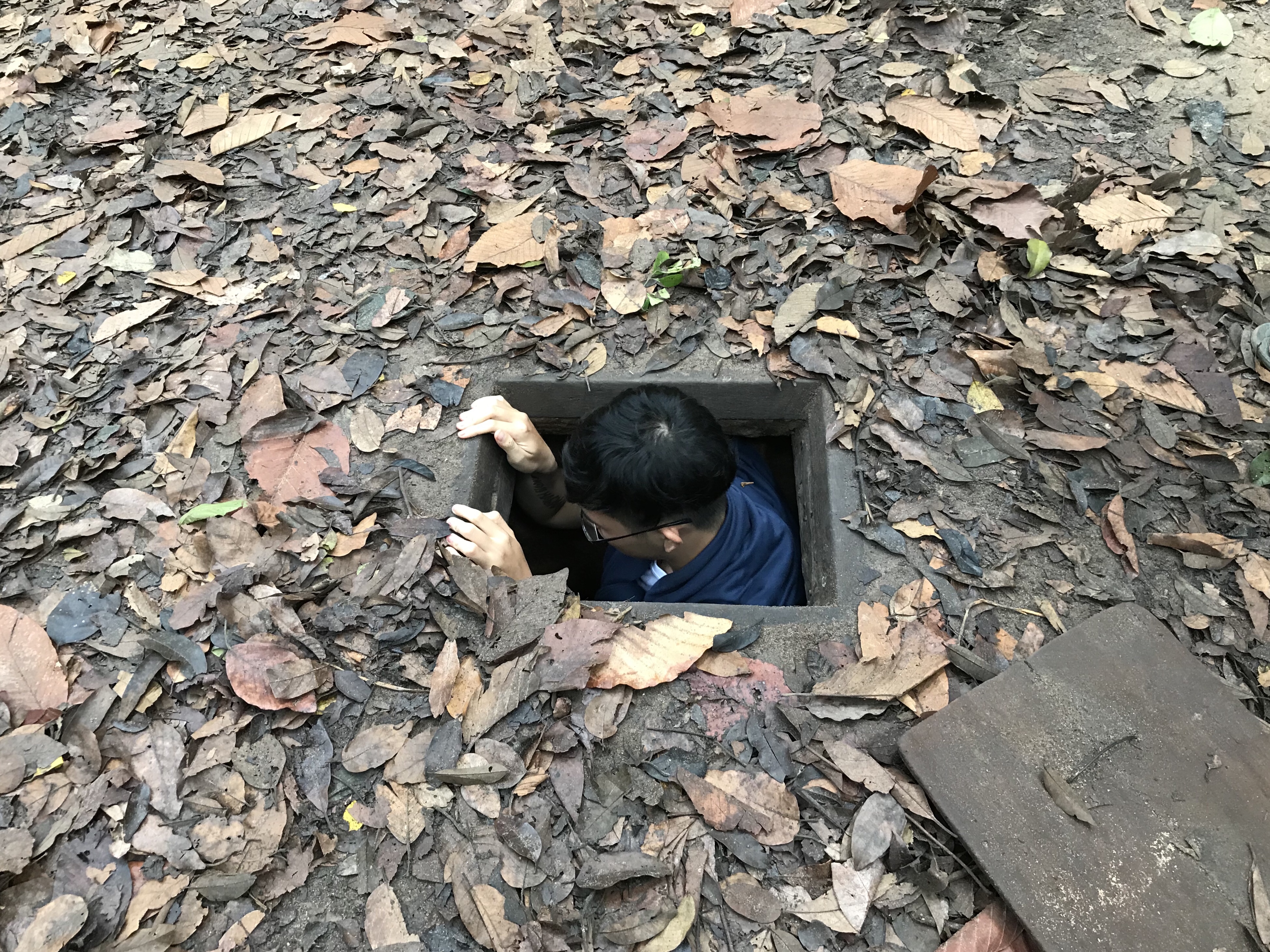
CU CHI TUNNELS
Ticket Cost: Ben Dinh: 110,000 VND/person; Ben Duoc: 90,000 VND/person
Hours: 7 am – 5 pm ❘ budget 3 hours
Transportation: Box ⇣
This was one of my favourite days out of the 2 weeks and the credit goes to OneTrip. In my opinion, these tunnels are a must-see to truly understand the foundation modern Vietnam is built on.
Currently, there are two sections of the tunnel open to the public: Ben Dinh and Ben Duoc. Ben Dinh is closer to the city and easier to get to, thus making it the more popular destination of the two for tourists to flock to. Christina will tell you EVERY little detail you need to know about visiting these tunnels here and why Ben Duoc is the way to go.
Visit my “Day Trip to Ben Duoc” to learn more about my experience with these tunnels and basically, having the best tour of my life!
DAY 3 – MEKONG DELTA
Mekong Delta is a vast maze of rivers, swamps, and islands located in Southern Vietnam. People come here to see floating markets, visit villages surrounded by rice paddies, and ride sampans down coconut groves.
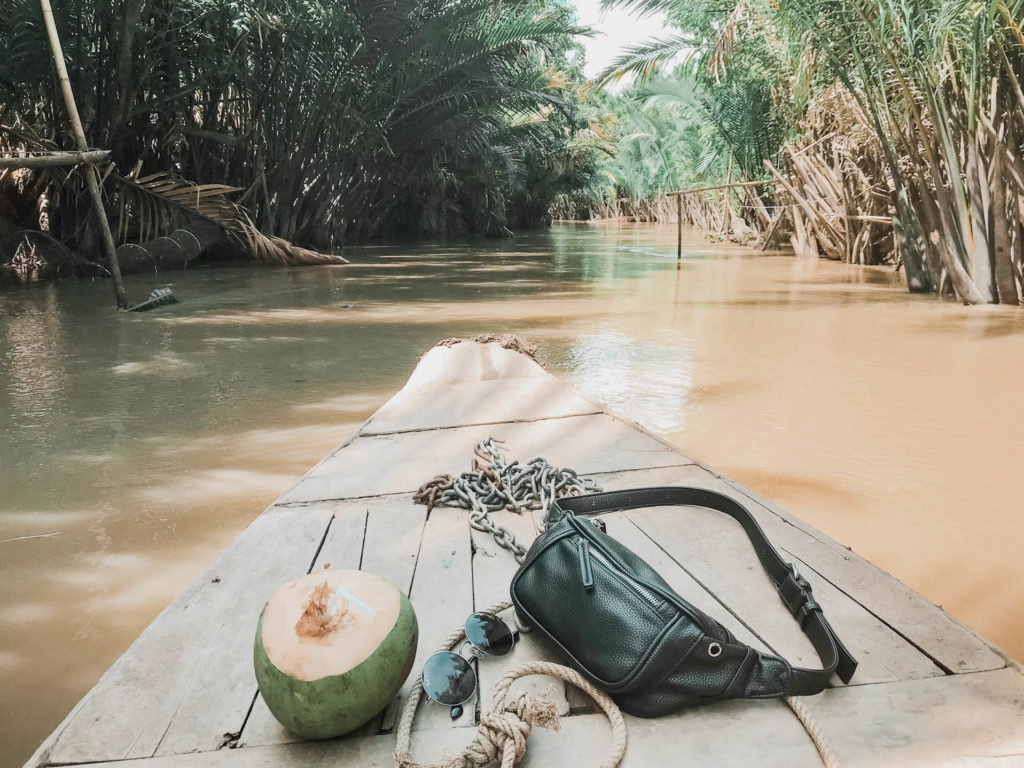
If it’s easy to access in Vietnam, it’s touristy. One of the most iconic things one can do in Vietnam is ride a paddle boat (sampan) down a coconut grove. People usually go to My Tho or Ben Tre for this. I decided to go to Ben Tre (pronounced “Ben Jeh”), because it’s a little harder to access. My efforts were rewarded by having whole groves to myself. To say the least, it was magical! However, it would not be right to stop here because, if I were to be honest, not everything was magical. If you’re interested in finding out why, then read along.
HOW TO GET TO MEKONG DELTA
Buses around these parts are your main mode of transportation. We took the Minh Tam bus at 6:45 am and arrived to Ben Tre at around 9:45 am. For more money, you can rent motorbikes, take taxis, or hire private cars.
Once again, Christina wrote a great article on how to get here. If you want to know something about Vietnam, check first to see if she has an article on it. I’m not sponsored by the way. Just a big fan!
WHERE TO STAY
Start by highlighting where you want to visit then find accommodations near those attractions. More often than not, these accommodations offer tours to places nearby and that’s how we came across Winter Spring Homestay in Can Tho (2.5 hours from Ben Tre), because we had wanted to check out Cai Rang Floating Market. It was by far our most comfortable stay in Vietnam, partly due to the hosts upgrading us to a bigger room. It was also the only place where we had free laundry on site.
Note that while hostels by rivers are super romantic, they often don’t come with air conditioning. That’s something to keep in mind if you’re visiting in the summer.
WHAT TO EAT [CAN THO]
I said it once before and I’ll say it again. I’m terrible with food. We had to buy food at a banh mi stand by the Minh Tam bus stop (which tasted delicious) and went to this restaurant beside the restaurant recommended by our host, which turned out to be dead average…
FINAL THOUGHTS
Mekong Delta is really big. Two nights is the bare minimum to have somewhat of an “authentic” experience. I recommend at least 4 days. This is because it’s challenging to get to places that are truly local. One thing you can do is rent bikes from hostels and ride around the countryside. Most of everything else requires you to book a tour.
I also found this area particularly hard to research. Company ads are rampant and blogs that had something to say on the matter are poorly written. The only source I trusted were advice offered by a local named, Nhung, under the username @mangocruises on Tripadvisor. Read through all her posts to get an idea of places offering the most authenticity. In general, go as south as you can.
Visit “2 Days In Mekong Delta” to read more about my experience here. I cover every little detail pertained to transportation, sampan tours, and overall reflections.
DAY 4 – MEKONG DELTA [CAI RANG] + HO CHI MINH CITY
Floating markets live up to its name quite literally. They’re century old traditions where Mekong Delta dwellers come together on boats to sell their goods. Most markets open from 5-10 am with 7-8 am peak hours.
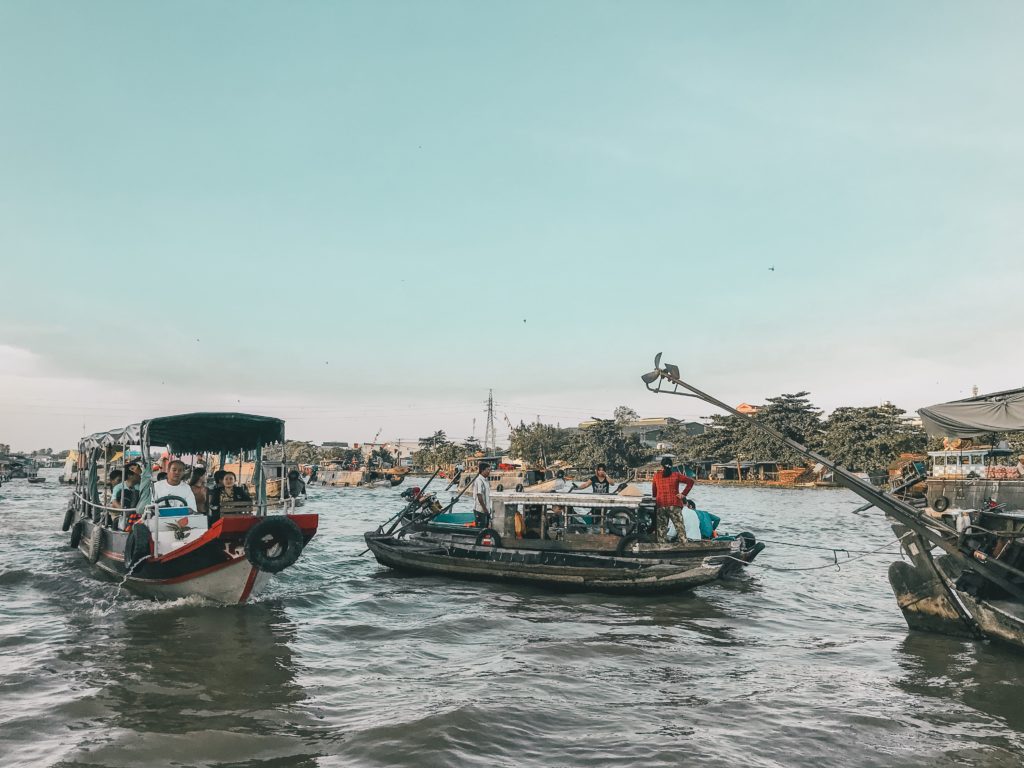
There are so many floating markets nestled within Mekong Delta. The most popular being Cai Rang and Cai Be. Only day tours to Cai Be are available from HCMC due to proximity. Remember what I said about accessibility? Easier access = Touristy. The rest of the markets requires you to stay overnight in a town nearby. The more south you go, the harder it is to get to, the more local it’ll be.
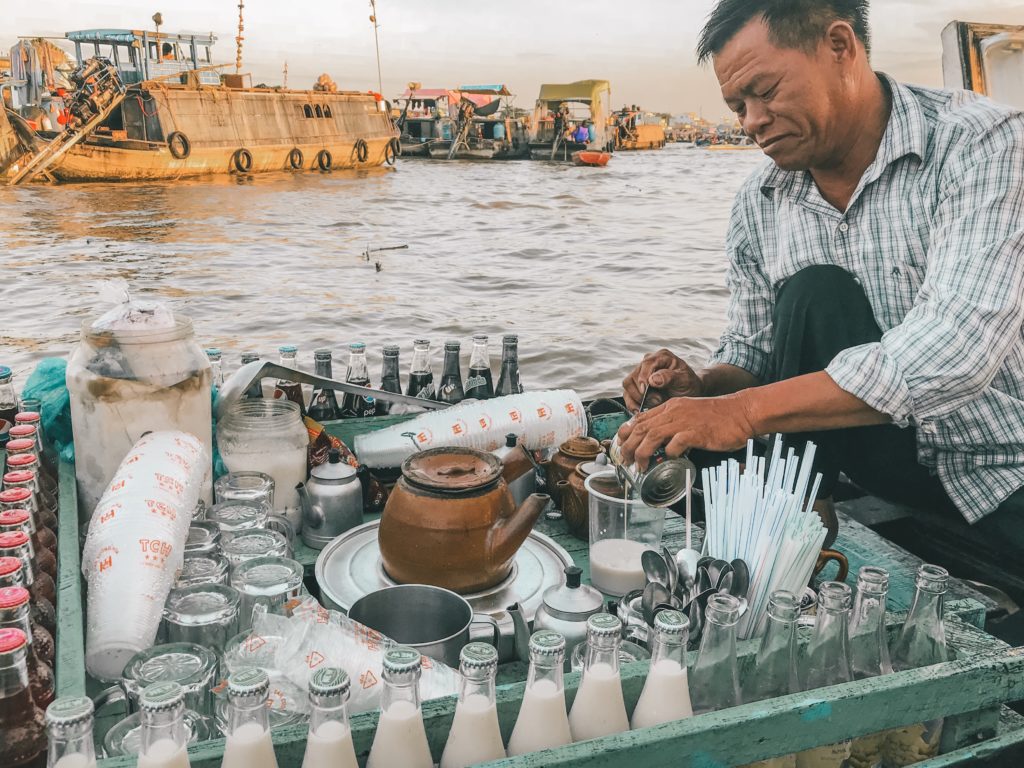
CAI RANG FLOATING MARKET
Cost: Depends on your transportation
Hours: All day ❘ best time to go is 5-10 am
Transportation: Box ⇣
Instead of wasting my breath, go here to see what Christina has to say about visiting Cai Rang.
BACK TO HO CHI MINH CITY
After our tour, we took a long bus ride back to HCMC. We then took a taxi to Min Chau Hotel and called it a night. The hotel itself is very old but decent. It’s also located close to the train station which was where we’re headed early next morning. The owners speaks Cantonese too so Mike was able to communicate with them!
FINAL THOUGHTS
Once again, one night in Mekong is a joke. It’s not enough to get a sense of the place. To thoroughly explore, I would give it 4-5 days. I wasn’t able to because I chose to prioritize my motorbike trip to Hanoi, no regrets. But, that’s not to say you should!
Visit my “Mekong Delta – Cai Rang Floating Market” to read about my tour there!
DAY 5 – MUI NE
Mui Ne is inevitably a touristy beach town with lots of Russian visitors. People come here for 3 main attractions: Fairy Stream, White Sand Dunes, and Red Sand Dunes. Others include visiting the fishing village, watching beach sunsets, and eating Bo Ke (seafood BBQ) by the sea.
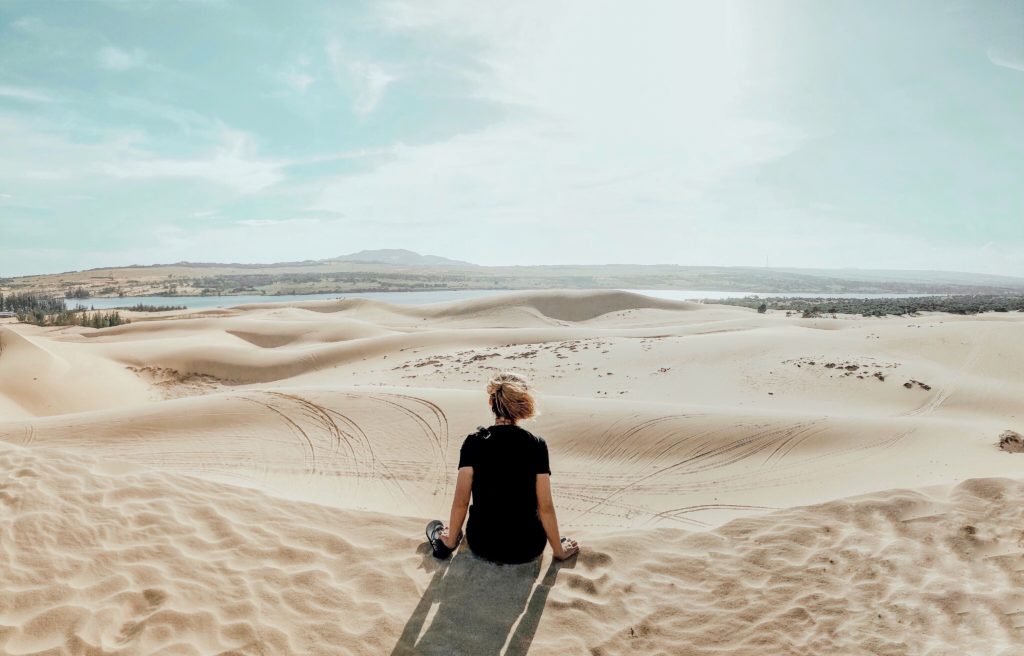
HOW TO GET TO MUI NE
Most people will give you directions from HCMC, but you can travel to Mui Ne from other cities. If you’re coming from HCMC, go by train which will take you to Phu Thuy, not Mui Ne. From there, shuttles and taxis are readily available to take you to your next destination. There are coach buses that can directly take you to Mui Ne (although it’s really Ham Tien), but trains are so much better. I’ll explain why in a separate post.
HOW TO GET AROUND MUI NE
This is really important. Short answer: hire a driver, don’t rent motorbikes. With the exception of Fairy Stream in Ham Tien, every attraction requires you to travel by motorbike/car. Buses don’t come that frequently and you wouldn’t want to wait for it anyway because you might overheat. Don’t worry, taxis aren’t that expensive (~60-120,000 VND).
THINGS TO DO
Go visit all the sandy landscapes. Although they’re more like sand dunes than deserts, being a sand junkie that I am, I needed to go. Our trip here would’ve been perfect if it wasn’t for our driver scamming us. More on that later. I was able to do everything in one day while still feeling relaxed, but you may want to stretch it out if you prefer to go at a slower pace.
Fairy Stream
Ticket Cost: 15,000 VND/person
Hours: 6 am – 6 pm ❘ budget 1-2 hours
Transportation: Walk, Bus, Taxi
This is one of my favourite attractions in Vietnam! Essentially it’s a 1.8 km long shallow stream that’s safe for kids and adults to hike through barefoot. On the way, you’ll see dramatic geological landscapes. Towards the end, a mini waterfall will greet you as a reward! This place is so magical. The best part is cooling down on a midsummer day by walking through the water with bare feet.
There will be multiple checkpoints along the way so be sure to always have your tickets on hand. In the middle, there’s a restaurant and shop area but prices here are high. Go early or late in the day to avoid crowds.
White Sand Dunes
Ticket Cost: None to walk around ❘ 500,000+ VND for 4×4
Hours: 5 am – 6 pm ❘ budget 1-2 hours
Transportation: Jeep Tour or Bicycles
It would be hard to google Mui Ne without coming across photos of the White Sand Dunes. This place is quite far from Mui Ne proper so you’ll need someone to drive you (you can grab a taxi or get your hotel to arrange a ride). Upon arrival, you might be greeted by locals trying to sell you jeep tours. Long story short, it’s not worth it. I will explain more in another post, but it’s definitely better and free to walk around at your own pace.
Red Sant Dunes
Ticket Cost: None
Hours: 5 am – 6 pm ❘ budget 1-2 hours
Transportation: Jeap Tour or Bicycles
A red counterpart to the White Sand Dunes. Travellers recommend coming here to watch the sunset. There’s no jeeps zipping around, but there will be a lot of ladies taking jumping selfies. That said, this place is quite surreal. Bring water if you can but don’t worry if you forget since there’s a couple of food stalls right by the entrance.
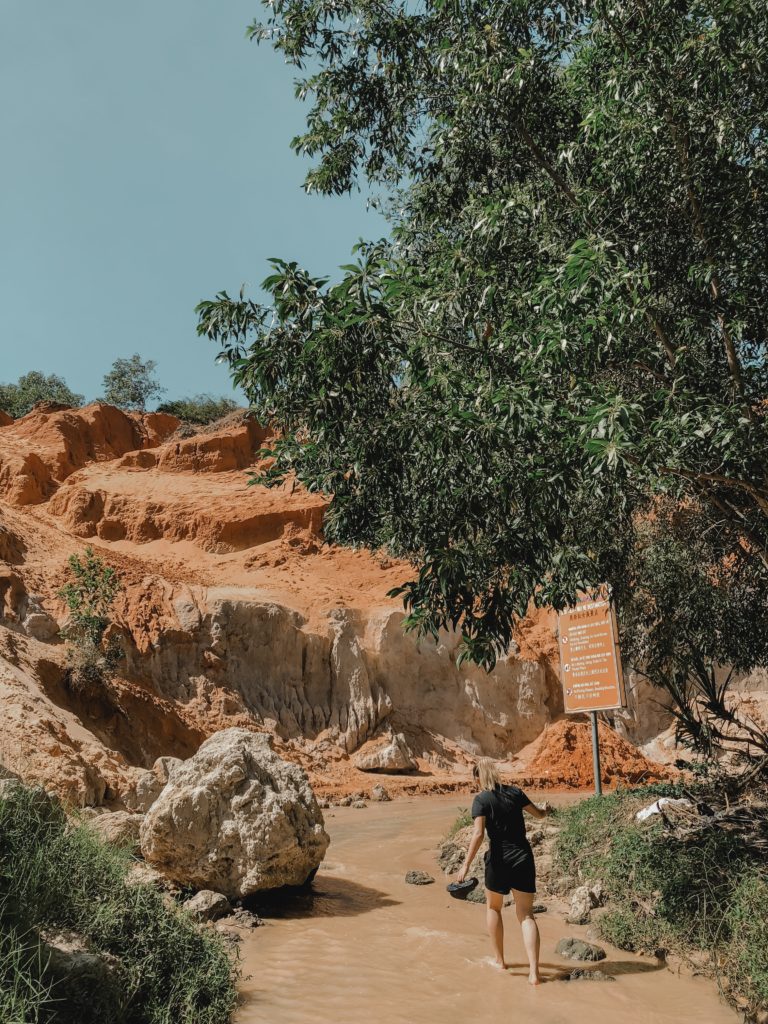
Fairy Stream 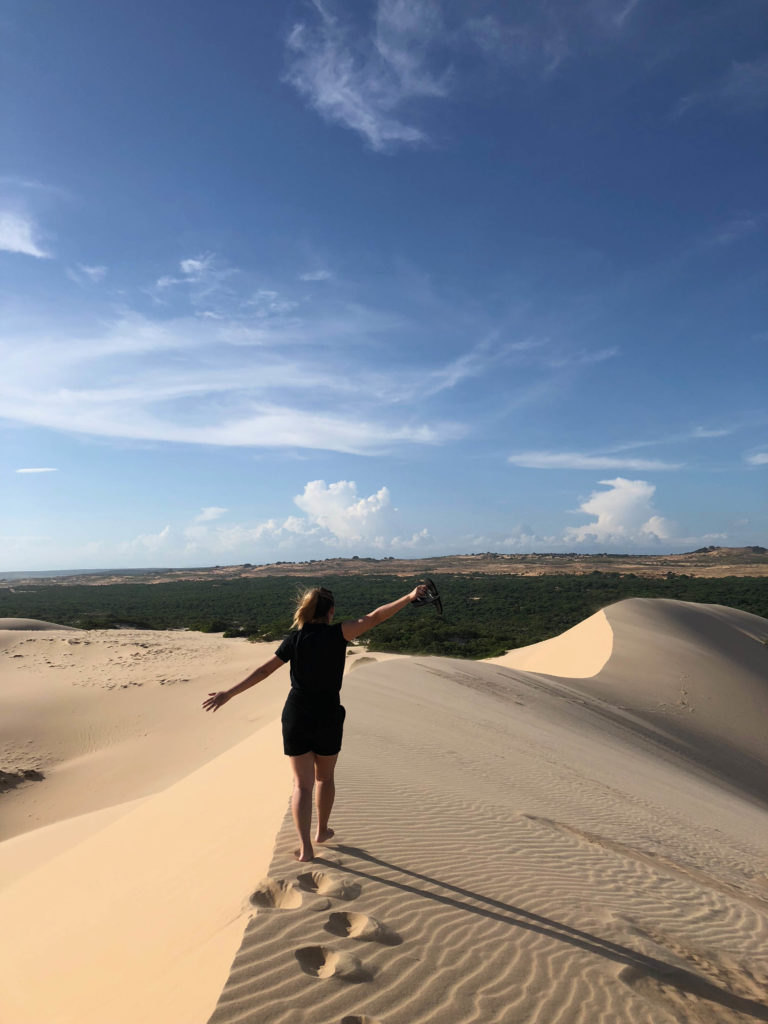
White Sand Dunes
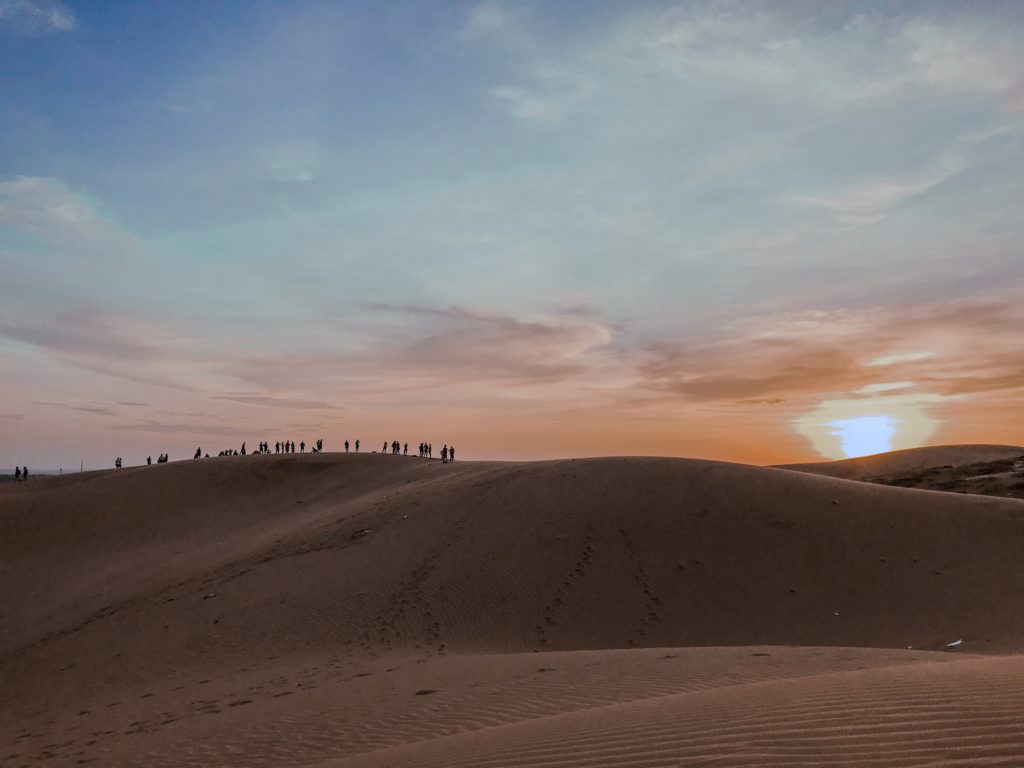
Red Sand Dunes
WHERE TO STAY
Most accommodations aren’t located in Mui Ne, but in the neighbouring town, Ham Tien. This doesn’t stop places in Ham Tien from labeling its location as Mui Ne. Sand Dunes are located 24-32 km from hotels, so it’s impossible to walk there. My suggestion is to find accommodations near sources of food and hire a driver to take you out to see the dunes. I stayed at Diem Lien Guesthouse (super close to the Fairy Stream!).
WHERE TO EAT
You go to Mui Ne if you want to eat fresh, cheap, barbecued seafood. They call this style of cuisine, Bo Ke (pronounced “boe keh”). In Ham Tien, there’s a stretch of Bo Ke stalls lined up one after the other by the sea. They’re easy to access and also great places to watch the sunset!
Visit my post, “2 Days in Mui Ne,” to read about how I got scammed and access a detailed overview of transportation, tours, and other helpful info!
DAY 6 – HO CHI MINH CITY [SHOPPING @ BEN THANH]
If you haven’t noticed, every other day I’m back in HCMC. This is because a lot of places I wanted to visit make HCMC the easiest starting point. In addition, traffic is notoriously congested in Vietnam. That means, whether or not you have money to splurge on transportation, a lot of your time is spent commuting!
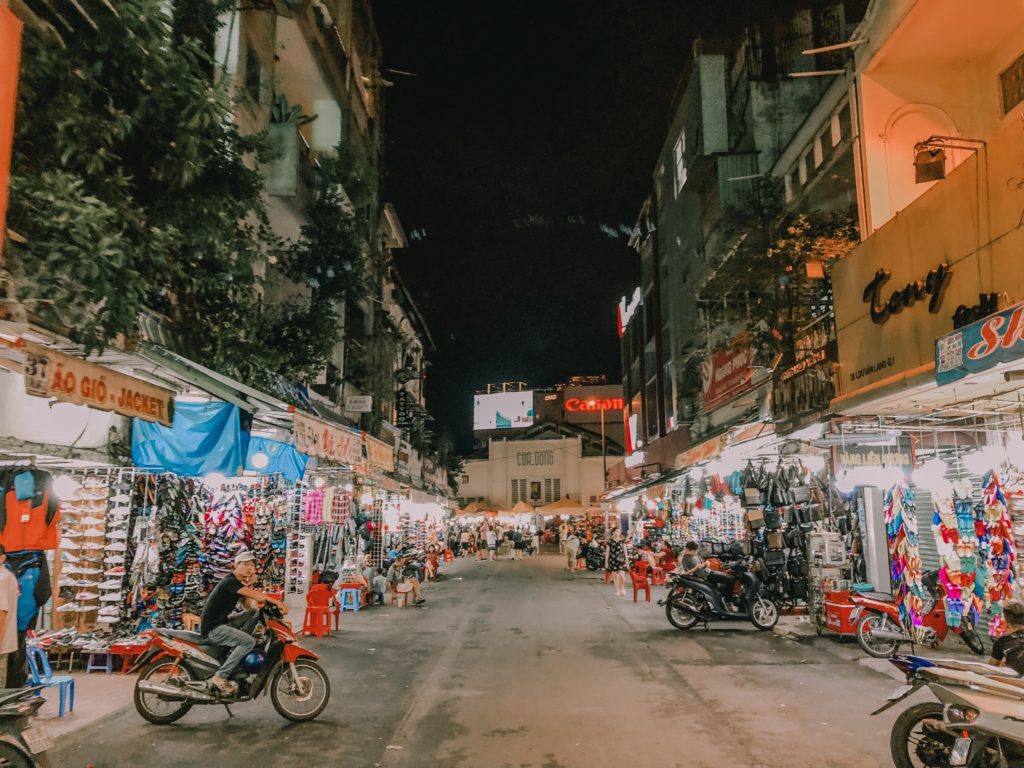
Anyway, with the little time I had back in the city, I decided to go SHOPPING!
There are quite a few places to shop in Vietnam. I’m not a huge shopper when traveling since I usually only have a backpack on me, but this didn’t take away my experience browsing through Ben Thanh Night Market and reviving my haggling skills when Mike realized he needed a lightweight jacket to shield himself from the blazing winter sun.
I didn’t go in depth with my research on shopping, so there’s nothing that I can recommend in good faith. I chose to go to Ben Thanh because of its late hours. If you’re not familiar with Asian markets, just know that most prices are marked up with vendors expecting to bargain. In fact, some vendors will give you a discount before you even say anything. I know a lot of people are uncomfortable with bargaining and I understand if it’s not a part of the culture you grew up with; which is why I think bargaining is a great opportunity for one to get insight to local life in Asia. Funny enough, Wikipedia has a pretty good article on bargaining and how it can be different from regions to regions.
DAY 6 – DA NANG + GOLDEN BRIDGE + MY SON + HOI AN
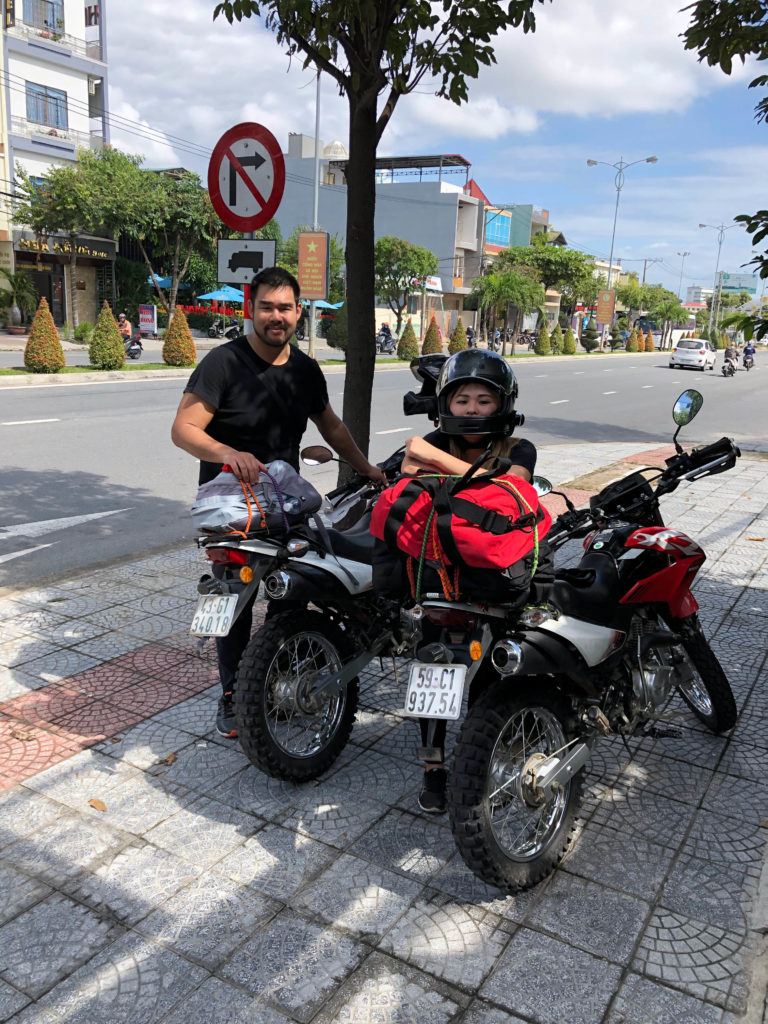
Yup, we were insane to cover 1 flight, 2 attractions, and 1 night market in one day. To do it all, I bought the earliest flight I could find on Jetstar and landed in Da Nang at 7:20 am. Our flight cost $135 CAD for two people and 1 checked luggage. For the first 5 days, we carried 2 backpacks and 2 motorcycle helmets and now, it’s finally time to do what we came to do: MOTORBIKE ROAD TRIP UP NORTH!
First, we needed to pick up our rental bikes. To do so, we taxied to Tigit‘s satellite office in Da Nang. I highly recommend you to check out Mike’s post on everything there is to know about renting a motorbike in Vietnam (when he writes it that is lol).
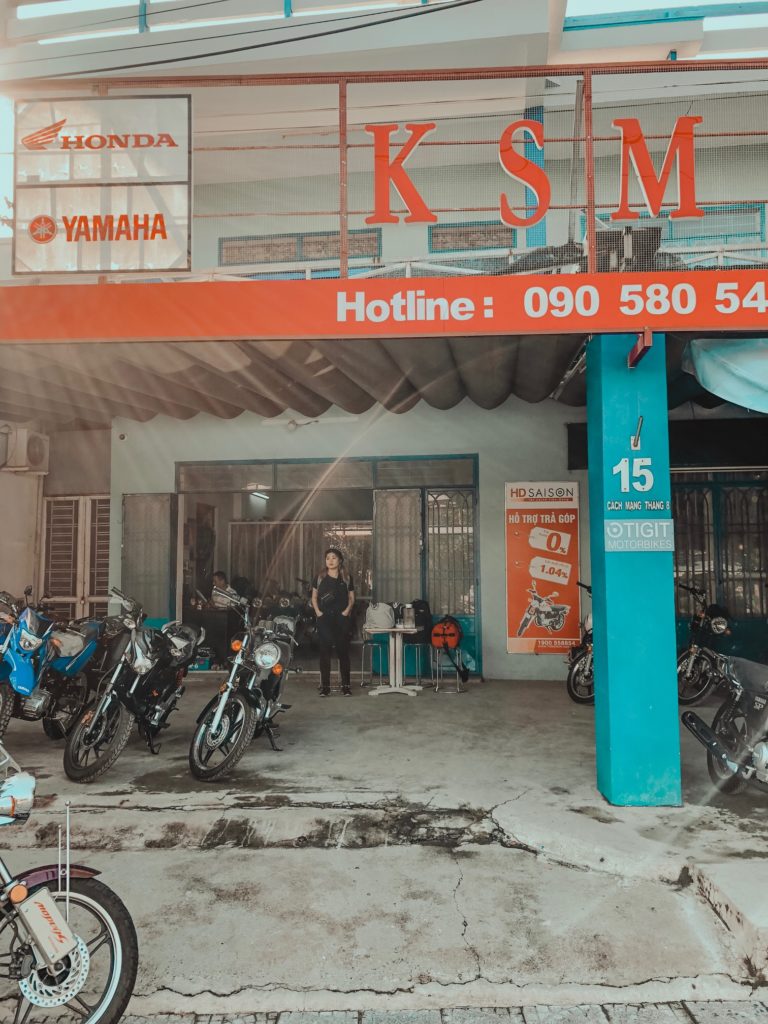
DA NANG + RENTING A MOTORBIKE
I can’t say much about Da Nang other than it’s a big coastal city that’s been getting more and more buzz. The vibe is much more laid back than the south and we didn’t get harassed as much by taxi drivers. Overall, it was a great change of pace and a safer environment for us to start our motorbike journey. This is especially the case for me since this was my first time riding an actual motorcycle in traffic (back home, I rode a Yamaha 125cc Scooter).
My husband, Mike, is an experienced motorcycle rider. As for me, by the time I arrived in Vietnam, I had only taken a 3-day course on how to ride a motorcycle in a Canadian parking lot. One of the reasons why we wanted to visit Vietnam was partly due to the TV show, Top Gear, and mostly, learning that Vietnam is on the bucket list for many riders.
My thoughts after doing it all: Absolutely do it if you have the chance, but do your research, know that it can be dangerous, go with experienced riders, and have realistic expectations. [You can visit here to read about my experience riding through the country.
We budgeted 3 hours to sort through the rental stuff (there’s a lot to look out for) and we were able to leave the Tigit office earlier than expected by 10:30 am. Our first stop, The Golden Bridge!
GOLDEN BRIDGE
Ticket Cost: 650,000 VND/person
Hours: 7:00 am to 9:00 pm/everyday ❘ budget 3-6 hours
Transportation: box ⇣
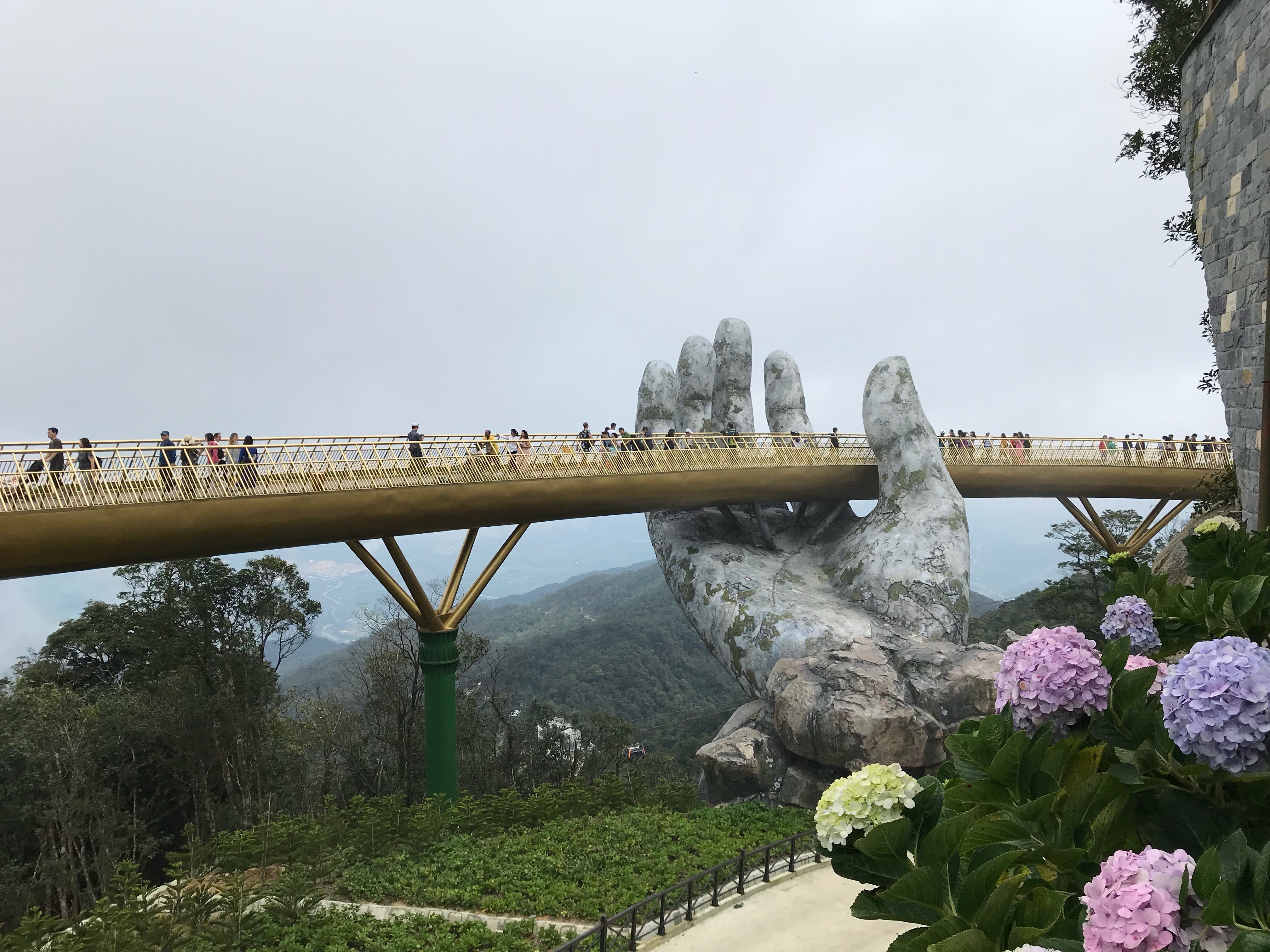
This bridge is so new, it’s not even on Google maps. Opened in June 2018, The Golden Bridge is situated within Ba Na Hills Resort and built solely for the purpose of tourism. There weren’t a lot of information about it when I went and the clueless me, smitten by all the instagram posts, naively thought it was possible to ride to this bridge. NO. It’s high up on a mountain and you need a cable car to access it.
Also don’t do what I did and miss out on the free bag check beside the ticket office! I saw this counter with the word “BAGGAGE” written in huge block letters over the top, but my stupid brain didn’t clue in to what it was. So we ended up carrying our backpacks + helmets throughout the park!
If you want to visit this bridge, do yourself a favour and start looking up “Ba Na Hills SunWorld.” You will realize that this is actually an amusement park. Entry tickets are steep and only cover the cost of the cable ride. Christina offers information on transportation and more, here.
MY SON SANCTUARY
Ticket Cost: 150,000 VND/person
Hours: 6:30 am – 5:30 pm/everyday ❘ budget 2-3 hours
Transportation: find out more in the green box ⇣
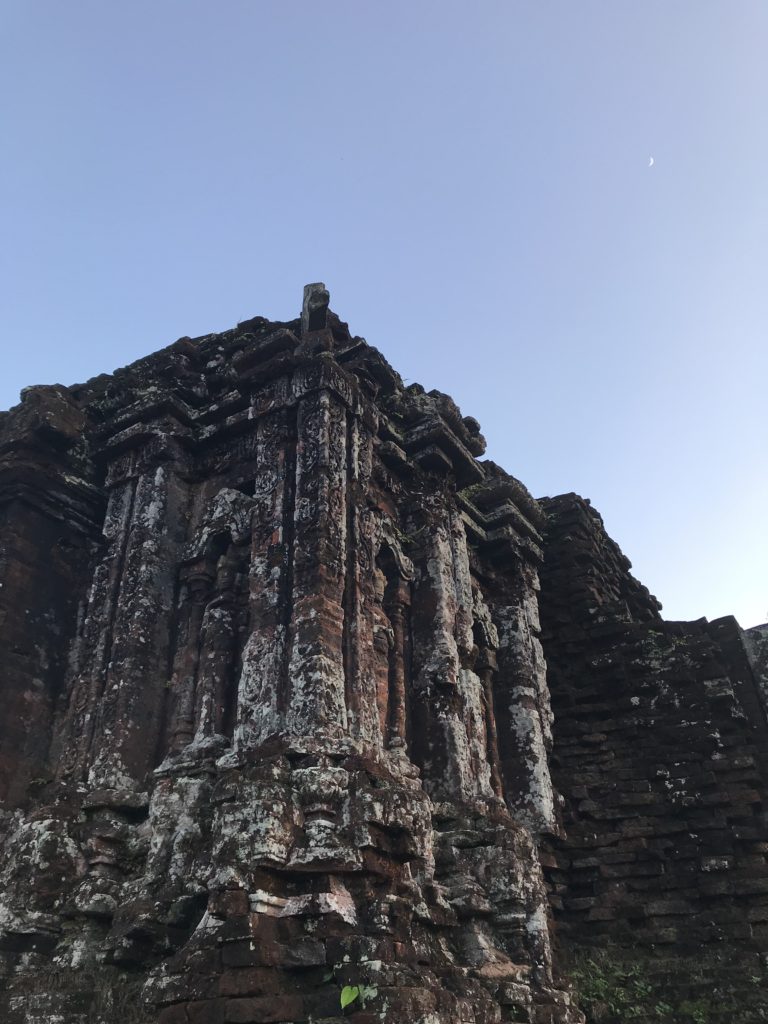
Truly, a highlight of my trip and, in my opinion, one of the most underrated attractions in Vietnam. This UNESCO site showcases a widespread cluster of abandoned and partially ruined Hindu Cham temples. After you purchase your ticket, take a 10 minute electric shuttle to the main trail. The trail will guide you to all the ruins in the area. Keep in mind that the weather can get quite hot as everything is out in the open, so always have water on hand. If you want to avoid crowds, go at 3 pm. For us, it was pure bliss as it was just us and the temples. Note: please respect the sanctuary and don’t climb the ruins!
Ivana & Gianni [Nomad is Beautiful] wrote an in-depth article on visiting My Son. Christina also has an article on it as well. I do think a guided tour is worth checking out which are available on-site. There are info plaques throughout the sanctuary but not enough if you really like ruins.
HOI AN
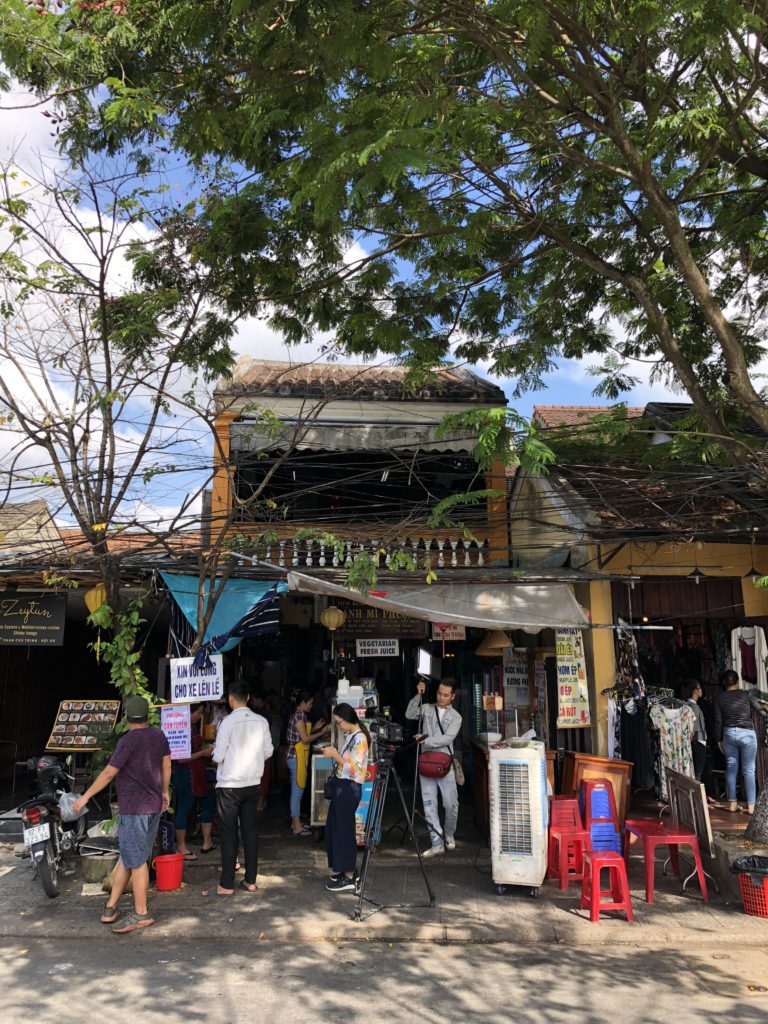
Hoi An, a beautiful port city known for its Ancient Town and tailored suits market (turnover is as quick as a day!). We chose this as our final stop for the day. Unfortunately, we only had a night to spend though most people would recommend 2-3 days.
WHERE TO STAY
After a long day of riding and living the tourist life, we wanted to sleep somewhere with a view and close to a night market. We went with Riverlife Homestay, which ended up being our most expensive stay. Clean, well decorated, low water pressure, host is a little too attentive. Overall, average.
DAY 7 – MARBLE MOUNTAIN + HAI VAN PASS + HUE
MARBLE MOUNTAIN
Ticket Cost: 40,000 VND/person
Hours: 7 am – 5:30 pm/everyday ❘ budget 2-3 hours

So, I lied. There is another thing I know about Da Nang and that’s, Marble Mountain. In my opinion, another underrated attraction. Top Gear fans out there, we think this is where Hammond & Clarkson bought May a marble statue. Basically, as the name suggests, this is a limestone hill that Buddhists and Hindus made into temples. There are actually 5 hills in the district, but only Thuy (Water) mountain is open to the public.
You don’t need a tour guide. Simply meander your way up the breathtaking mountain, through caves, past pagodas, and appreciate elaborate carvings along way. Don’t bother with the elevator if you can help it- it’s a cash-grab. Bring your own water and take the stairs.
HAI VAN PASS

This is a 21km mountain pass made popular by Top Gear. In case I wasn’t clear, the pass is a road and driving/riding through it is the attraction itself.
To be honest, having gone on many road trips through the mountain and coastal routes of Taiwan, this stretch is nothing in comparison. But if you don’t get a lot of opportunities to visit places like these, I think you’ll really enjoy it.
Tom [Vietnam Coracle] is your guy when it comes to roads around Vietnam. This article has everything you need to know.
HUE
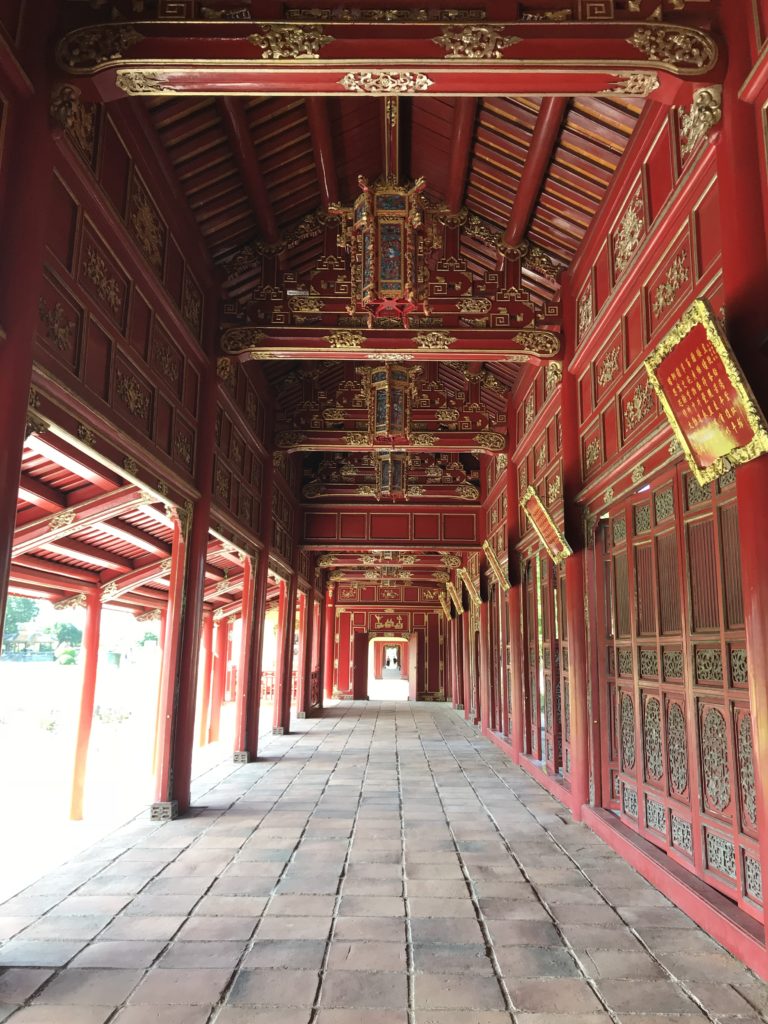
Hue (pronounced “hway”) used to be the capital of Vietnam until Emperor Bao Dai abdicated and gave way for the Democratic Republic of Vietnam to establish its capital in Hanoi. That said, it still retains a lot of its historical significance and gained a reputation of being the food capital of Vietnam.
There’s a lot to do in Hue, but the major attractions revolve around visiting tombs, the citadel, and temples. People usually recommend 3 days to fully explore the city.
There are 7 imperial tombs in Hue with the most popular being the tombs of Khai Dinh, Minh Mang, and Tu Duc. I was only able to visit the first 2.
Some tombs have their own entrance fees. If you’re planning on visiting the 3 major tombs + the citadel, you can buy a package rate of 280,000 VND/person. Ticket booths at any of these attractions don’t openly advertise this, so you’ll have to ask for it!
ROYAL TOMB OF KHAI DINH
Ticket Cost: 100,000 VND/adult ❘ 20,000 VND/child under 13
Hours: 7 am – 5:30 pm/everyday ❘ budget 1 hour
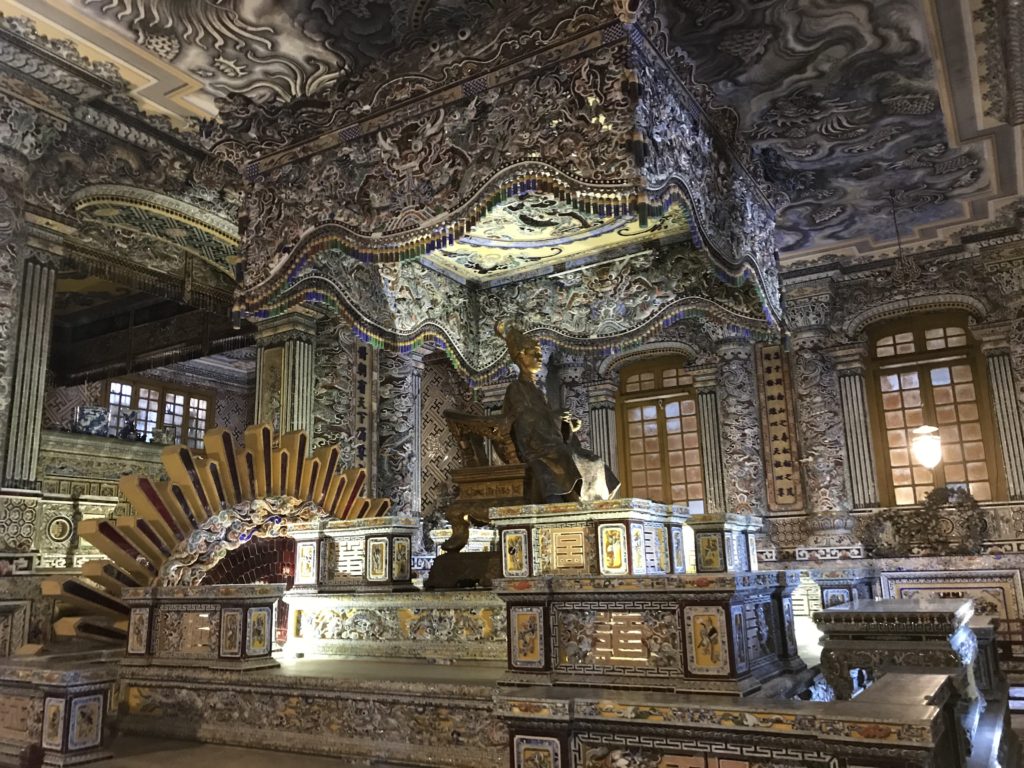
To be honest, when I first step into this tomb, I was bored. That is, until I stepped into the chamber where Khai Dinh laid. Everything was inlaid with broken pieces of glass, pottery, porcelain, etc. that came together to tell complete story. We hijacked a tour that pointed out quirky sections of the wall that otherwise would’ve gone unnoticed. We ended up staying there for 2 hours! I loved it so much.
MINH MANG TOMB
Ticket Cost: 100,000 VND/adult ❘ 20,000 VND/child under 13
Hours: 7 am – 5:30 pm/everyday ❘ budget 1.5 hour
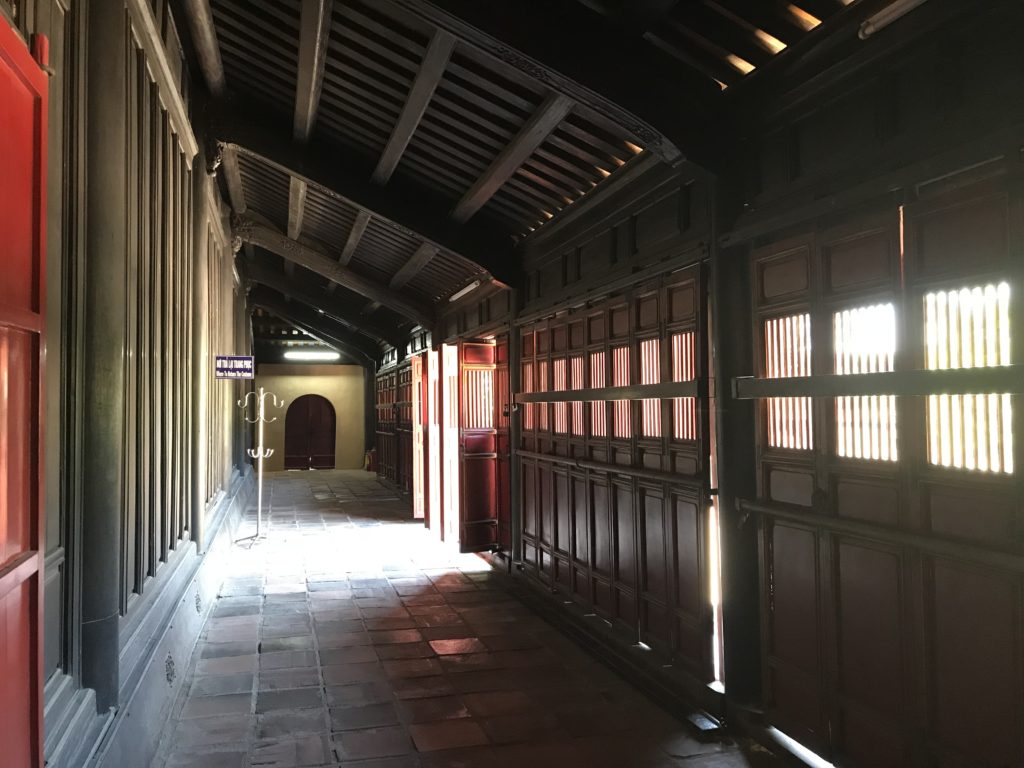
A lot of attractions in Hue is more about strolling through a park and this includes Minh Mang’s Tomb. Mike and I really liked the geometric design of the whole tomb (it’s a huge area) and appreciated the fact that each section of the park represented an event in emperor Minh Mang’s life. Sadly, the actual tomb is closed off and only opens on his death anniversary.
To find out about the rest of the tombs, Michael [Tripsavvy] has a brief summary on all 7 tombs. He’s also the only one, I’ve found, who mentions the admissions package deal you can buy to see 3 tombs + citadel, so brownie points there.
WHERE TO STAY
We chose Hue Four Seasons Hotel to spend the night since we wanted to be close to food and the citadel. The building and the rooms were quite old and shoddy, contrary to the photos, but the location was great and the service was good.
WHERE TO EAT
When we were at Hue, we had a lot of Bun Bo Hue. We loved that food here was a lot less sweet and more spicy compared to the south. There are a couple of Hue signature dishes, so be sure to research what they are!
DAY 8 – HUE [THE CITADEL] + KHE SANH
THE CITADEL / THE IMPERIAL CITY
Ticket Cost: 55,000 VND/adult
Hours: 8 am – 5:30 pm/everyday except Thursday ❘ budget 2+ hours
Transportation: Entrance is at the Ngo Mon Gate
One thing nice about attractions in Vietnam is that all of them open really early! We had a 4 hour ride ahead of us, so we wanted to tour the Citadel early. There weren’t a lot of tourists, but it was already hot. The first thing we noticed about the citadel was that it was very bare. A lot of the buildings were destroyed by the war, leaving only the skeleton behind. Everything was out in the open (no shade), and the square footage of this place is gigantic. I think it takes about 45 minutes to walk across, one-way.
If there’s anything to say, it’s to do your research before coming here. That, or hire an English-speaking guide. The Citadel is big and you won’t always know where to start or end. There’s definitely stuff to see but no signs pointing them out. It’s a place you shouldn’t walk in blind. In a nutshell, bring water, buy food outside the complex (cheaper), and hire a tour guide if possible.
I wasn’t able to find the perfect all-encompassing guide of the Citadel, but there are tons of blog posts on it that are easily accessible with a quick Google search.
KHE SANH
Khe Sanh is not a tourist attraction. You are most likely here because it’s a pitstop before tackling the most scenic part of the Ho Chi Minh trail. It’s a plain little town northwest of Hue, bordering Laos and known for the Battle of Khe Sanh.
I have written a separate post on my 8-day road trip to Hanoi. Check it out if you’re thinking of riding in Vietnam!
DAY 9 – Ho Chi Minh Trail to PHONG NHA KE BANG
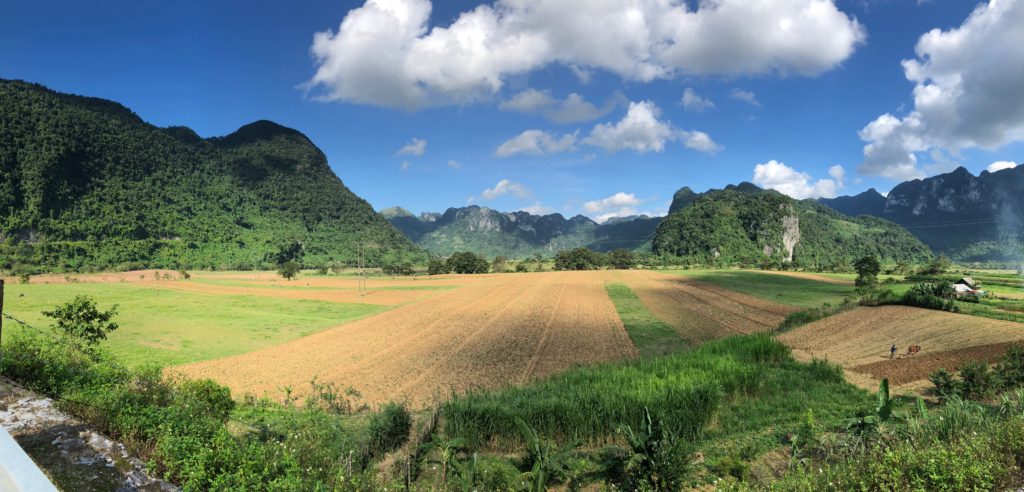
The road from Khe Sanh to Phong Nha Ke Bang was my favourite memory in Vietnam <3 Seriously. This road is truly off the beaten path and only accessible by motorbike or car. The whole journey took 8 hours of riding and is, perhaps, one of the best training ground for a fledgling rider! We took on mountain roads, saw Laos, got into a minor accident, said hi to cows and village kids, saved a Swede, was alone with some of the greatest sceneries, made friends, and so much more.
Big thanks to Tom [Vietnam Coracle] for being everybody’s bible when it comes to riding in Vietnam. We took his “Uncle Ho” route and were beyond happy! This guy deserves all the love.
DAY 10 – PHONG NHA KE BANG
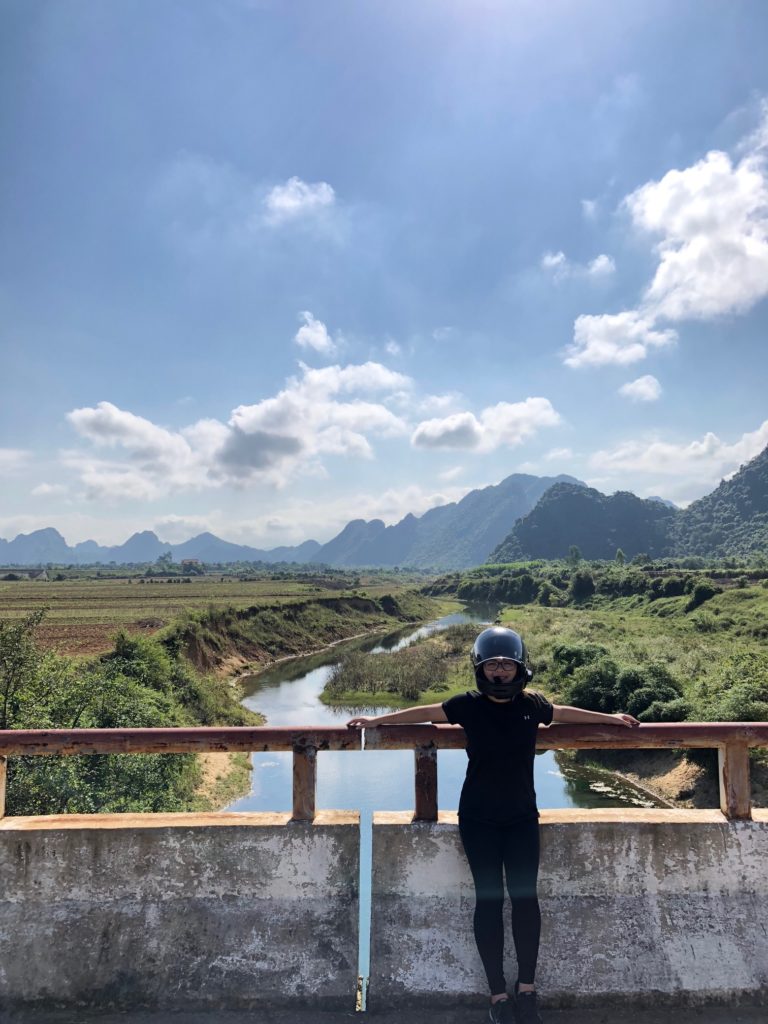
Phong Nha Ke Bang is a national park. It’s home to tropical forests, mountains, and CAVES! The whole area is a UNESCO World Heritage Site and most notable for the world’s largest cave, Son Doong Cave.
So underrated. So underrated. Despite this national park getting a good number of visitors per year, this place is still so underrated. Why? I believe it’s because it’s hard to access which makes the place magical, well maintained, and beautiful beyond imagination.
HOW TO GET TO PHONG NHA KE BANG NATIONAL PARK
Oxalis is your go-to on this one. Not only do they offer very thorough instructions on how to get here, they are also the only official tour operator licensed to take tourists into Son Doong Cave! Note that only 500 visitors get to go in each year and you need to be $$$ and EXTREMELY fit to go!
WHAT TO DO
There are so many caves to choose from and so many things to do. Christina gives a good overview of which caves to visit depending on your budget. Below is a snippet of the two caves we chose to visit!
PARADISE CAVE
Ticket Cost: 250,000 VND/adult
Hours: 7 am – 4:30 pm ❘ budget 2 hour
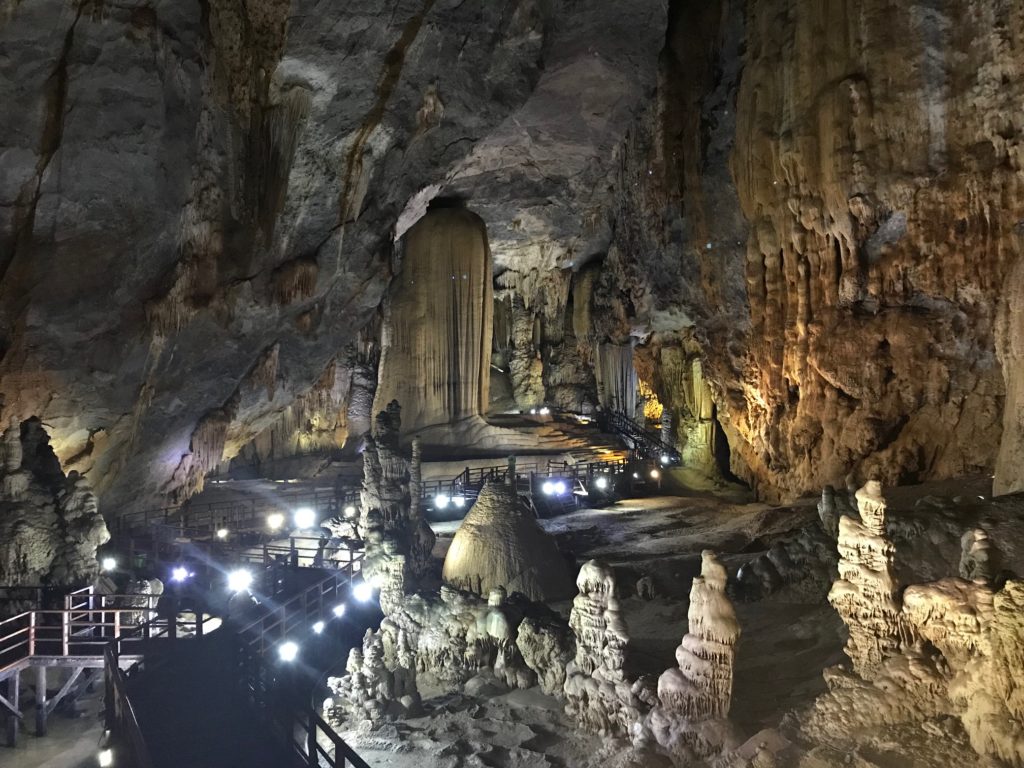
People say if you’ve never been to Paradise Cave, then you haven’t been to Phong Nha Khe Bang at all. The cave lives up to its name and is so well done in terms of guiding you through all the stalactites and limestones! Must recommend.
PHONG NHA CAVE
Ticket Cost: ~190,000 VND/person (depends on your boat)
Hours: 7 am – 4:30 pm ❘ timed tour
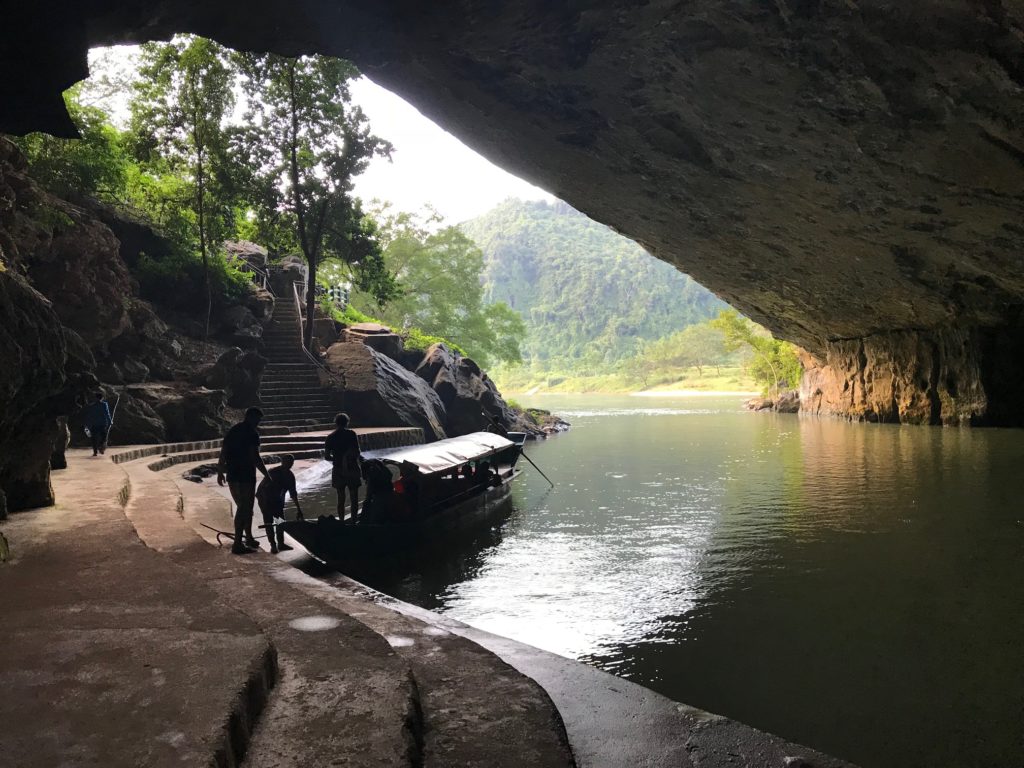
We only had enough time to go to one other cave and were torn between this one and Dark Cave. Dark Cave features a lot of fun activities like mud baths, swimming, and zip lining, but because we only had backpacks and not a lot of clothes to spare, we opted for Phong Nha Cave which you’ll need a boat to get to.
The weird thing about this cave as well as several others is that you need to share a 10 seater(?) boat with other travellers to get to the cave and the cost of your ticket depends on the number of people on your boat. So what you have to do is wait in front of the ticket office for enough people (I think it’s a minimum of 8 since that’s how many people we had to share with) to show up before the cashier let’s you buy a ticket. The cost then for your ticket would be 190,000 VND/8 people. I read stories that sometimes you have to wait for an hour for enough people to show up so go at your own risk.
WHERE TO STAY
People either stay by the Son River or in the Son Trach Village. The accommodations along the Son River seems to be homier and you get the view of the river. Accommodations in the village are more convenient if you want to restaurant hop. We stayed at the Paradise Hotel in the village and was pretty happy with it.
Mark [Rusty Compass] wrote a good guide on accommodations in the park.
WHERE TO EAT
Restaurants are more expensive in the Son Trach village, but they are more accessible and open late. The most well-known restaurant in town is the Phong Nha Bamboo Cafe, though be aware that it’s flocked with tourists.
FINAL THOUGHTS
Despite the park being so epic, Quang Binh Province is actually the poorest part of Vietnam and suffered greatly from the war. On your way out of the village and into the park with all the caves, you’ll see a lot of locals either hard at work in the fields or in tattered houses. If you know of any foundations supporting this area, let me know in the comments section. Otherwise, let’s be mindful tourists and remember that breathtaking caves isn’t the only reality, but the locals who made this area their home as well.
DAY 12 – NINH BINH
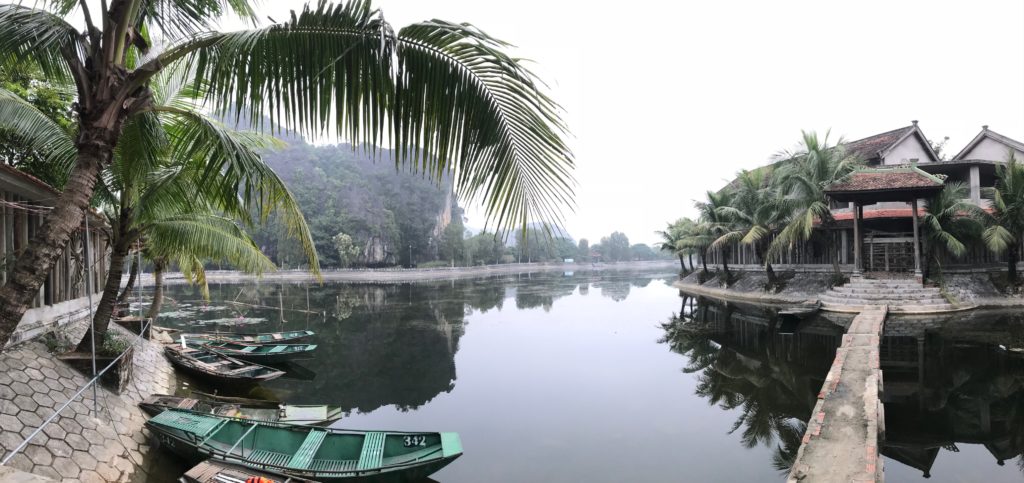
Known as the “Inland Halong Bay,” Ninh Binh is
For my last full day as a tourist, I had to choose between visiting Halong Bay, the publicly rated “must-see” destination of all time, or Ninh Binh, the “inland Halong Bay.” It was tough to choose and one of the few times I had to rely on opinion posts for help. After scouring the internet for things to do and places to see, I decided to go with Ninh Binh. I was not disappointed.
Not a lot of people know about Ninh Binh since it’s not well advertised, but those who went all said it was Halong Bay in its full glory. I have never been to Halong Bay myself, but my parents take their clients to the bay on a yearly basis. After comparing our experiences and photos, Ninh Binh won without a doubt. Even if I didn’t play the comparison game, going to Ninh Binh alone made me feel one with the country and left me stupid happy.
WHAT TO DO
TRAN AN (vs. TAM COC)
Ticket Cost: 200,000 VND/person ❘ 600,000 VND/entire boat
Hours: 7 am – 4 pm ❘ timed tour
Transportation: Green box
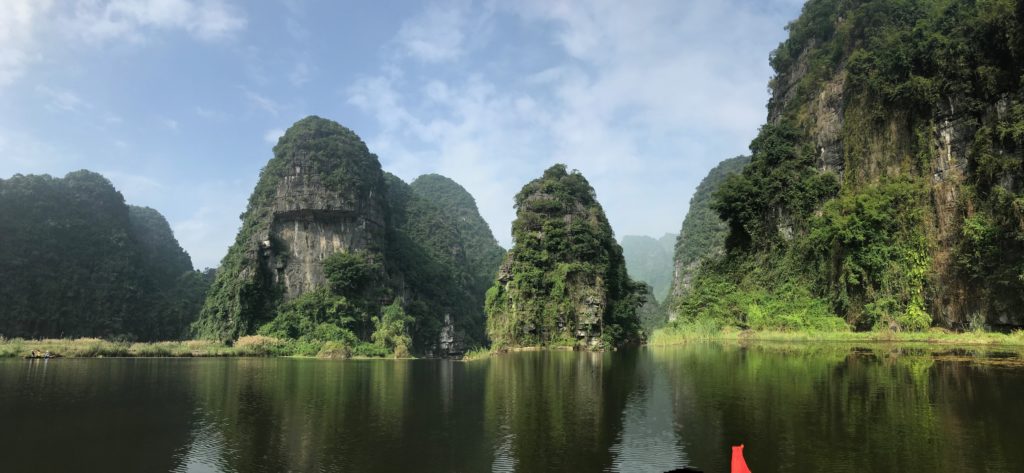
The main attraction in Ninh Binh is a boat tour through limestone mountains. There are 2 locations to do this, Tran An and Tam Coc. Reviews heavily bias towards Tran An and I think you can trust them on that. No matter which one you choose, go early or late to avoid tourists.
When you arrive, you might have to share a boat with other tourists depending on the number of your party. The minimum spend to get a whole boat to yourself is 600,000 VND. In my opinion, it was worth it for both photo purposes and privacy.
Be sure to specifically point out which route you want to take or the guide will follow the crowd. There are 3 routes in Tran An and there’s a lot of discussions on tripadvisor about which route to take. Ultimately, it really depends on what you like to see. You can, most certainly go on all the routes but it will cost you a lot of money and time. Each tour takes 2-3 hours.
I had the unfortunate experience of going on either route 2-3 despite wanting to go on route 1 (for geology lovers). We pointed out the route to our guide after we set sail, but we think he ignored us. When you go, make sure to double check if they’re going on the correct route! That said, other than seeing the Kong movie set, which I didn’t care for, everything else was breathtakingly beautiful.
Visit the Geeky Explorer for an overview of Ninh Binh and things to do. It doesn’t have cleanest format and there’s annoying ads between sections, but it’s a good place to start. Visit Aura [Daily Travel Pill] for an overview of Tran An’s Boat Tour. There are a couple of things I disagree with like her needing to pay 800,000 VND to get a whole boat to themselves or supporting the locals via tips, but she did cover the basics.
On Tipping: I’m using some of my liberty as an Asian to say this, tipping isn’t a thing in Vietnam or Asia. You might be charged a service fee at high-end places, but ultimately it’s a North American custom that’s evolved to be the primary means to compensate for low wages. People will always appreciate a tip no matter where you go and in the grand scheme of things, it’s not a big deal. But also know that what you get from YEARS of foreigners unconsciously enforcing their own customs are: travellers complaining Tam Coc to have become a tourist trap and cash grab; unhappy local guides who didn’t get a better tip than the last; lower standard of service; and tips becoming an expectation rather than a gift of appreciation. There are SO many better alternatives to support an economy. Tipping is NOT one of them. Go tip at any countryside restaurant and you’ll get a confused look because it’s not the norm. You might think your extra dollar is blessing them with more economical empowerment but it makes you stand out more than anything. Two words: tip wisely.
WHERE TO STAY
Tam Coc village is a favourite among many because of its proximity to attractions and restaurants. We stayed at Tam Coc Friendly Homestay and liked how it was right by a lake. However, there are many options to choose from and we would like to try another homestay when we go back.
Emily [Wander-Lush] deserves a huge shout out for some really thoughtful articles on accommodations. I found her after my trip and wished that wasn’t the case. Note that some parts of her article is a little wonky due to ad plugs, but it’s still easy to navigate. I agree with all the advice she gave including supporting locals by staying at family-owned homestays (yess!!!).
FINAL THOUGHTS
Ninh Binh is truly a hidden gem. It’s a fun place with so much to see but also a getaway for those who need a break. I would recommend a minimum of 2 nights stay and 3-4 nights to do everything at a reasonable pace.
DAY 13 – HANOI + HO CHI MINH CITY
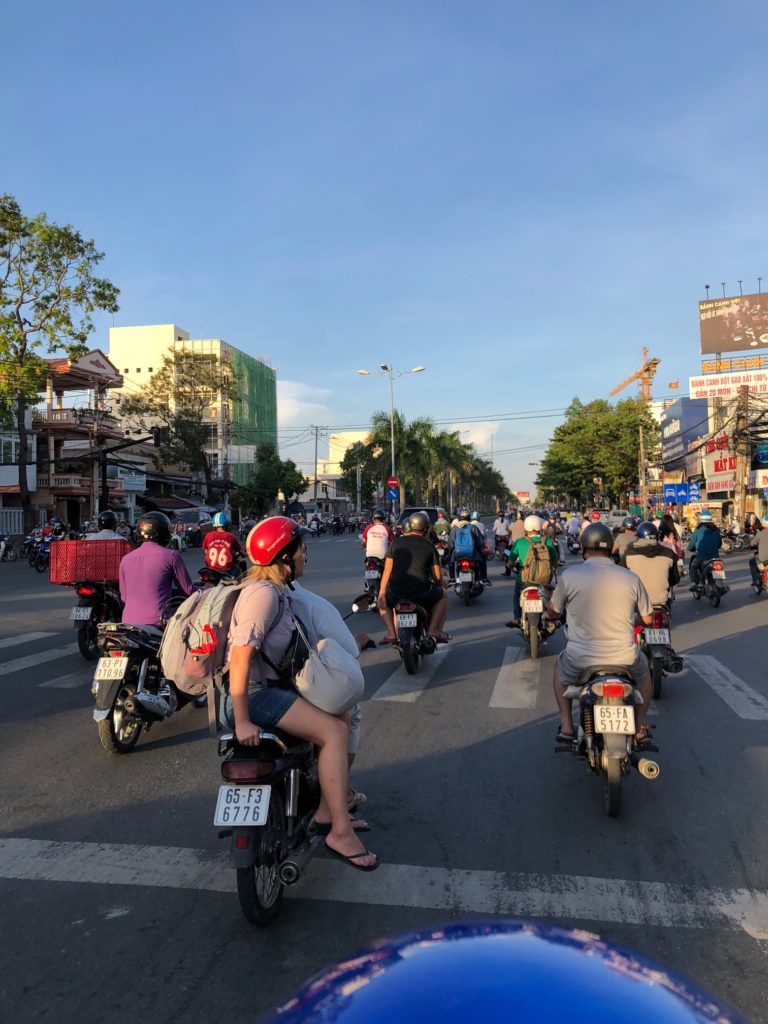
We have come to the final stretch of our 2 week itinerary and it was nothing short of dramatic. We had our first rain shower in the 13 days we’ve been in Vietnam and it got a little scary since we were riding the highway alongside big trucks with the most obnoxious horns. Up until now, we took mountain passes and local roads to get to our destinations, but we wanted to tour Hanoi before our flight back home so highway it was.
Visit here to read about how I got hit by a rock, formed a mini motorcycle gang, crashed 7 km from my final destination, and a long spiel on why safe riding practices are there for a reason!
DAY 14 – FLY HOME
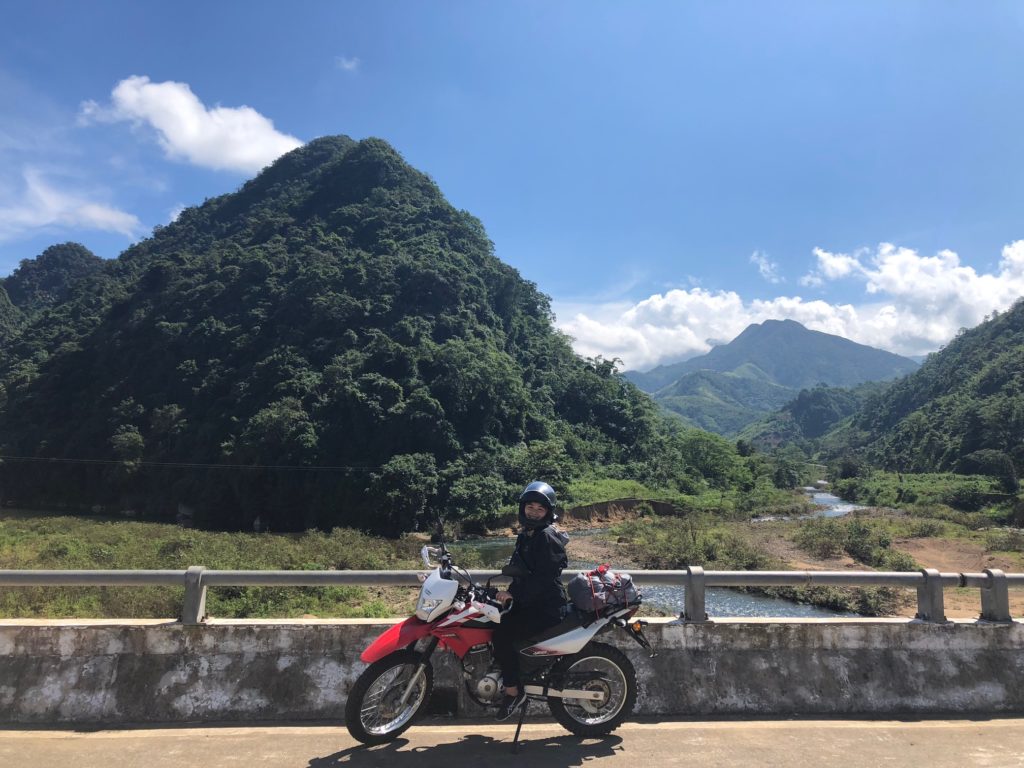
In the past two weeks, I got hit by a falling orange, a rock, a man, and a parked scooter. I rode in traffic for the first time, improved my riding speed from 40-60 km on mountain roads, saved a Swiss, made friends, experienced Vietnam at its worst and best, and got swept away by all its natural wonders. I wanted adventure when I came to Vietnam and adventure I got. Thanks Vietnam! I will be back.
Many thanks to you as well for getting this far. Whatever it is that you want, I hope this little blog can help you achieve it. Comments are always appreciated.
Cảm ơn (thank you),
Demi